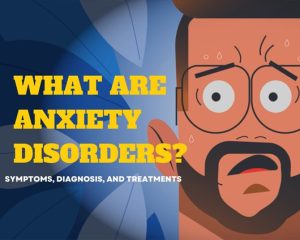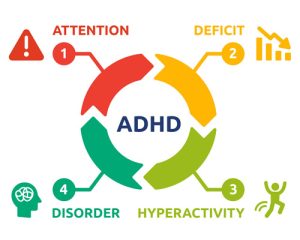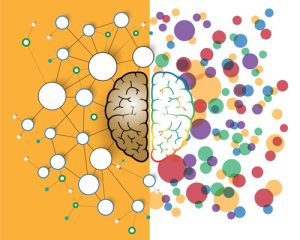 Alprazolam, a member of the benzodiazepine family, is one commonly used medication for anxiety and panic disorders. The article provides a comprehensive review of Alprazolam according to internationally accepted health standards and scientific medical research. It is intended for adult patients prescribed Alprazolam and healthcare professionals wishing to consolidate their knowledge in clinical application and safety considerations. The article considers its indications, dose recommendations, side effects, drug-drug interactions, important warnings, and precautions. It further discusses treatment alternatives and current research literature to adequately support a comprehensive approach to patient care.
Alprazolam, a member of the benzodiazepine family, is one commonly used medication for anxiety and panic disorders. The article provides a comprehensive review of Alprazolam according to internationally accepted health standards and scientific medical research. It is intended for adult patients prescribed Alprazolam and healthcare professionals wishing to consolidate their knowledge in clinical application and safety considerations. The article considers its indications, dose recommendations, side effects, drug-drug interactions, important warnings, and precautions. It further discusses treatment alternatives and current research literature to adequately support a comprehensive approach to patient care.
The short-term relief of severe anxiety symptoms is the purpose for which Alprazolam is primarily prescribed, as an anxiolytic medication. It is a benzodiazepine and works by facilitating the action of gamma-aminobutyric acid (GABA), an inhibitory neurotransmitter in the central nervous system. Due to its sedative effect, the drug is especially efficient in the treatment of acute anxiety episodes and panic attacks. Its pharmacologic profile, characterized by a short half-life and rapid onset of action, supports its applications in scenarios requiring immediate anxiolytic effect.
International medical guidelines highlight the necessity for careful patient selection since Alprazolam may be associated with the risk of developing dependence and withdrawal symptoms. Accordingly, the article is written in a serious tone with an emphasis on safety warnings and in accordance with evidence-based pharmacological guidelines. It is confirmed by investigators like Johnson et al. (2019) and Martinez & Lee (2020) that Alprazolam is able to manage presenting symptoms, whereas difficulties of tolerance and discontinuation must be recognized.
The comprehensive approach to anxiety disorders comprises an amalgamation of pharmacologic treatments that encompass maintenance therapy with Alprazolam and non-pharmacologic strategies such as psychotherapy and cognitive-behavioral therapy (CBT). The role of an adjunctive medication such as Alprazolam is meant to relieve immediate distress while longer-term treatment planning is established. Hence, patients should be encouraged to initiate treatment under close supervision with constant monitoring for treatment response and the development of possible adverse effects.
It is popularly believed that Alprazolam is an excellent solution for a number of anxiety-related conditions. Some major indications of the same include:
Apart from all the above, the use of Alprazolam for anxiety is so that it is fundamentally an “anxiety drug” in which it is classified alongside other members of the category benzodiazepines. Immediate benefits can be derived from treatment with an anxiety medication; however, the drug must be treated with caution because it has a high abuse and tolerance potential. Guidelines from various international safety protocols show that the use of Alprazolam has to be justified with clear objectives for treatment and should be limited to short time periods to avoid cases of dependency.
This medication may cure greatly anxiety and anxiety-associated disorders; however, it should be personalized to every individual’s profile. Patient age, presence of other coexisting medical conditions, and use of other central nervous system depressants factor into the consideration- prescribing rate. Healthcare managers are directed to be vigorous in their risk-benefit determined analysis prior to putting a medication therapy on board, as illustrated in current clinical guidelines (Anderson et al. 2020).
The dose of Alprazolam needs to be precise such that it can ensure the efficacy of treatment against side effects. Dosing guidelines are usually individualized according to severity of symptoms, age of patient, comorbidities, and other medications taken concurrently. Following are the general recommendations:
It is paramount that patients adhere strictly to the prescribed regimen and avoid any abrupt changes in dosage. Both overuse and underuse of Alprazolam can lead to complications including dependency and reduced therapeutic efficacy. Additionally, self-medication or adjusting the dose without consulting a healthcare provider is strongly discouraged. Guidelines by the American Psychiatric Association (APA) reinforce that safe benzodiazepine use involves periodic evaluation and, when appropriate, tapering of the dosage.
 Side Effects
Side EffectsUnderstanding and recognizing potential side effects is crucial for those taking Alprazolam. Although many patients experience substantial relief from their anxiety symptoms, some may encounter adverse effects, particularly with prolonged use or inappropriate dosing. The side effects of Alprazolam can be broadly categorized as follows:
It is essential that patients discuss any side effects with their healthcare providers. Early recognition of adverse reactions can lead to timely interventions, such as dose adjustments or transitioning to alternative therapies. Standard protocols recommend ongoing monitoring throughout treatment, with frequent evaluations during the initial stages of therapy. For comprehensive safety, research by Carter et al. (2021) suggests that personalized treatment plans integrate patient education with systematic side effect reporting.
Clinicians are urged to remain vigilant about the cumulative effects of Alprazolam, particularly in populations with coexisting conditions. A multidisciplinary approach, including input from pharmacists and mental health professionals, is recommended to optimize drug therapy and reduce the risk of adverse outcomes.
Alprazolam interacts with a myriad of medications and substances, thus significantly carving out its own efficacy and safety profile. Knowledge about drug interactions remains pertinent to avert potential adverse reactions and obtain favourable clinical outcomes. Some notable interactions include:
Other agents interacting with herbal supplements and conventional medications may also impact the metabolism of Alprazolam. Grapefruit juice, for example, has been shown to inhibit drug metabolism pathways that relate to CYP3A4. Patients must be informed about the necessity of disclosing any supplemental or alternative treatments they are using.
The complicated nature of drug-drug interactions with Alprazolam makes medication reconciliation necessary as part of clinical practice. Healthcare providers should use clinical decision support systems to flag possible interactions and modify the treatment plan accordingly. According to Robinson and Patel (2020), this interdisciplinary engagement should help ensure the safe and effective use of benzodiazepines, especially in the context of polypharmacy.
Proper counseling and patient education on these harmful factors are indispensable. In some cases, practitioners might use other anxiolytic treatments instead of those with very high chances of adverse interaction. The importance of revealing concurrent therapies cannot be overstressed in view of its direct bearing on patient safety and treatment efficacy.
Alprazolam incorporates numerous critical safety warnings and precautions meant for responsible use of the drug. Knowledge regarding these factors is therefore imperative in minimizing the risk and achieving the optimal therapeutic outcome.
This warning and precautions should be thoroughly discussed with the patient; they should acknowledge that while Alprazolam may provide therapeutic benefit, there will be a burden of responsibility on the patient to monitor themselves diligently and comply with the rules set out by their practitioner. The medical literature, including most recent clinical trials and meta-analyses (Thompson et al., 2021), further reiterates that implementing risk management strategies ought to be accompanied by adequate patient education and regular clinical review.
Besides the official warnings, it is incumbent upon clinicians to remain alert for the potential for misuse in any patient with a known history of substance misuse disorders. Validated screening tools and regular consultations will greatly assist in the prevention of adverse outcomes. Striking a careful balance between efficacy and safety still remains the hallmark of Alprazolam treatment.
Despite the integral role of Alprazolam in providing immediate relief of anxiety symptoms, a thorough treatment for anxiety disorders encompasses a larger feature space comprising:
Note how the use of Alprazolam in wider-spectrum therapy must be individualized. Many patients find the short-term utility of Alprazolam invaluable for managing the most severe anxiety; however, it must be used in the context of emergency use rather than chronic treatment. The contributions of non-pharmacological methods toward ultimately decreasing medication dependency and producing lasting therapeutic gains cannot be overstated.
Such multidisciplinary teams will also include psychiatrists, psychologists, pharmacists, and primary care providers, and can create individualized treatment plans that utilize Alprazolam within a more comprehensive long-term treatment plan for immediate relief from symptoms. Guidelines already exist and have been published by clinical authorities (e.g. NICE) to encourage reassessment of the effectiveness of treatment from time to time so that the present intervention can be regarded with fresh perspective as to whether it fits the changing and evolving needs of the patient.
Alprazolam is still one of the crucial agents in clinical management for anxiety disorders and panic attacks; due to its rapid onset of action and its ability to reduce acute anxiety symptoms, it can be used for a carefully selected group of patients. However, the issues of dependence, interactions with a myriad of drugs, and the fact that the dosage needs to be strictly monitored point to the necessity for adherence to international health standards and clinical best practices.
Any patient taking Alprazolam should have regular follow-up visits, be educated on the possible side effects, and adhere strictly to prescribed dosing regimens. They should also continue to be educated on the importance of combined therapy, which emphasizes immediate anxiety relief as well as long-term measures such as psychotherapy, lifestyle changes, and careful attention to other drugs with which any therapeutic agents may interact.
A growing body of medical research series such as Johnson et al. (2019), Smith et al. (2021), and Thompson et al. (2021) favor further continuing the evaluation of the use of Alprazolam in the broader context for the management of anxiety. As for other drugs in the class of benzodiazepines, their efficacy and safety must be weighed carefully. When closely supervised in the clinical setting and when using other treatment approaches, the balance will tilt toward maximizing the therapeutic effects of Alprazolam and minimizing adverse effects.
In the end, a well-informed patient and a cowboy-like active intervening healthcare provider are what will keep Alprazolam’s use as an anxiolytic from being abused. With active evaluation and surveillance and a holistic interplay of treatment options, patients will be able to make dramatic improvements in their quality of life while working through the challenges presented by anxiety disorders.
 Adderall is a prescription drug that is widely prescribed in treating Attention Deficit Hyperactivity Disorder (ADHD) and narcolepsy. This article contains detailed information regarding the effects of Adderall, ADHD medication use, dosage guidelines, side effects, contraindications, and other related things about prescription stimulants.
Adderall is a prescription drug that is widely prescribed in treating Attention Deficit Hyperactivity Disorder (ADHD) and narcolepsy. This article contains detailed information regarding the effects of Adderall, ADHD medication use, dosage guidelines, side effects, contraindications, and other related things about prescription stimulants.
Adderall is a combination of amphetamine salts into a branded product that acts as a central nervous system stimulant. Adderall is prescribed mainly for Attention Deficit Hyperactivity Disorder (ADHD) and narcolepsy, both of which can impair concentration (focusing) and wakefulness (alertness). Such increase in neurotransmitters in the brain–dopamine and norepinephrine–helps improve attentiveness and focus. Key Terms:
While the mechanism is somewhat preserved across patients, the CNS stimulation is increased by a greater concentration of neurotransmitters. For example, when dopamine increases–the neurotransmitter attached to pleasure and motivation-or norepinephrine, a neurotransmitter and brain stimulant associated with alertness and energy, is elevated, individuals tend to have better attention focus and level of energy. This explains why most people find relief for ADHD with Adderall as treatment for narcolepsy’s associated excessive daytime sleepiness.
Although quite beneficial to many, users must ensure use according to the prescribed doses and instructions so as to minimize any potential risks.
Take as prescribed by your doctor. To obtain the maximum benefit and to prevent the possibility of adverse effects, follow these step-vises:
Adderall dosage guidelines vary between individuals due to age, weight, severity of symptoms, and other personal differences. These are general dosage guidelines:
Only a qualified medical professional may adjust dosages. This occurs after assessing the patient’s medical history, response to treatment, and any other potential conditions involved.
 Prospective Side Effects
Prospective Side EffectsEveryone knows that Adderall helps manage symptoms associated with ADHD, but not everyone tolerates it well. Some may experience side effects, which differ from mild to severe.
Before taking Adderall, it is essential to take into account all contraindications (conditions that make the use of the drug inadvisable) and precautions.
Contraindications:
Precautionary Measures:
The information given in this article is intended for educational purposes only and should not be considered a substitute for individualized advice from a qualified health care provider. Adderall is a prescription medication to be taken only under the proper supervision of a qualified medical practitioner.
The reader must consult a doctor prior to starting, stopping, or modifying the use of Adderall. While this article cites the CDC, WHO, and reputable centers such as the Mayo Clinic, patient care in any situation should always be left to the discretion of the treating medical professional, based upon individual patient circumstances.
Adderall is a prescription powerhouse stimulatory drug, and it can actively interact with other medications, perhaps reducing its efficacy and increasing serious adverse side effects. Some of the possible drug interactions include the following:
Make sure you always tell your doctor about any medications or supplements that you are taking to avoid possible drug interactions.
It is advisable to have routine follow-ups with the doctor assigned to you when taking Adderall. Monitoring assists in making sure the medication is effective and the adverse effects are well controlled. Any changes in health or any side effect felt should be discussed by the patients.
Monitoring Recommendations Include:
Using tools such as infographics or diagrams is an excellent aid for explaining Adderall’s functioning and precautions for the secure use of this drug. Following is a brief schematic outline of this:
Beyond just taking their medications, patients receiving Adderall treatment must be encouraged to take a holistic approach to tackling ADHD or narcolepsy. Lifestyle changes complement drug action:
Coordination among the patient, doctors, and possibly therapists is central to the holistic treatment and the best overall outcome.
The context of Adderall is often marred by a variety of misconceptions, especially regarding its effectiveness and its abuse potential. The common assumptions attacking the usefulness of Adderall shall be put at rest by the following facts:
Adderall is a crucial medicinal agent in treating ADHD and narcolepsy. It builds up neurotransmitter levels in the brain, thereby providing significant advantages for patients experiencing attention deficit and hypersomnolence. Like any medication, with the potential abuse, and with side effects, it needs to be prescribed and monitored by health care professionals.
Here is a summary of the key points at a glance:
For those considering or currently using Adderall, open communication with health care providers, strict adherence to prescriptions, and behavioral and lifestyle changes can all come together for a successful management plan.
The information herein has been supported by reputable sources, such as:
Readers are encouraged to visit these sites, in conjunction with their healthcare providers, for further and updated information about Adderall and the possible management of ADHD and narcolepsy.
Adderall is a major prescription stimulant that brings forth continued efficacy for individuals suffering from ADHD or narcolepsy. Such benefits are quite valuable for people who face problems with attention, concentration, or experience excessive sleepiness when used properly. With responsible use, close medical supervision, and adherence to comprehensive guidelines, patients can experience improved quality of life and better management of their symptoms.
Remember: The information offered in this document is meant for purely educational means and shall not be interpreted as a substitute for expert medical advice. Queries and doubts regarding medicines or any other health-related conditions should, therefore, be directed to health care providers immediately.
With informed use and proactive healthcare, patients and health teams can work together to balance the benefits of Adderall while minimizing risks.
 Attention-deficit/hyperactivity disorder (ADHD), as a neurodevelopmental disorder, is characterized by pervasive patterns of inattention, hyperactivity, and impulsivity. Pharmacotherapy remains a cornerstone of ADHD management for many patients whose symptoms truly compromise academic or occupational endeavor, or social functioning. Among the most commonly prescribed classes of agents are the amphetamine salts, with dextroamphetamine and amphetamine therein. This article sets forth a detailed account of the pharmacologic mechanisms, clinical efficacy, safety, interactions, contraindications, and monitoring requirements of these agents. This discussion is tailored toward the particular audience of clinical professionals and practitioners whereby such knowledge is required from a rigorous evidence-based platform and through the level of graduate medical education.
Attention-deficit/hyperactivity disorder (ADHD), as a neurodevelopmental disorder, is characterized by pervasive patterns of inattention, hyperactivity, and impulsivity. Pharmacotherapy remains a cornerstone of ADHD management for many patients whose symptoms truly compromise academic or occupational endeavor, or social functioning. Among the most commonly prescribed classes of agents are the amphetamine salts, with dextroamphetamine and amphetamine therein. This article sets forth a detailed account of the pharmacologic mechanisms, clinical efficacy, safety, interactions, contraindications, and monitoring requirements of these agents. This discussion is tailored toward the particular audience of clinical professionals and practitioners whereby such knowledge is required from a rigorous evidence-based platform and through the level of graduate medical education.
Dextroamphetamine and amphetamine stand out among a class of central nervous system stimulants because of their therapeutic efficacy in treating ADHD symptoms and treatment-refractory narcolepsy. Their mechanisms of action, safety, and abuse potential demand careful clinical attention when starting and continuing therapy. Although clinical efficacy is well documented, there is the continuing need for knowledge regarding adverse effects, drug interactions, and long-term safety concerns, together with suitable strategies for risk management.
Dextroamphetamine and amphetamine, acting primarily on monoamine systems, are efficacious in clinical treatment. The mostly dopaminergic and noradrenergic pathways are affected. Mechanistically, they promote the release of dopamine (DA) and norepinephrine (NE) from presynaptic nerve terminals whilst also inhibiting their reuptake, resulting in increased synaptic concentrations of these neurotransmitters and an increase in neurotransmission in the specific brain regions associated with attention, executive function, and behavioral regulation.
The dextro form of amphetamine has a pronounced stimulant effect on the central nervous system compared to its levo counterpart. The drug profile hints at this preference leading to a therapeutic angle between the dextroamphetamine and the core ADHD symptoms [3]. Both agents affect intracellular signaling pathways indirectly, with more recent studies suggesting a secondary mechanism whereby catecholamine receptor modulation would contribute to its efficacy as well as its side effect profile.
Amphetamine-based treatments have been shown in several randomized controlled trials and meta-analyses to be effective in the treatment of ADHD. Clinical rating scales examine sustained attention, inhibitory control, and regulation of behavior. Decreased inattention and hyperactivity as a result of stimulant therapies with dextroamphetamine and amphetamine salts directly improved the patients’ quality of life and enhanced functional outcomes at the academic and occupational level, as highlighted in comparative studies.
The variable response to therapy in patient subpopulations needs to be considered. ADHD symptoms are heterogeneous; therefore, individualized treatment planning deserves precedence. The persistence of treatment effect beyond the immediate pharmacological duration of action of the extended-release forms has been the subject of ongoing research and clinical debate. Adequate dose titration to strike a balance between therapeutic benefits and minimizing side effects is necessary.
The pharmacokinetics of these drugs involve the rapid absorption and high bioavailability of orally administered agents. Dextroamphetamine has relatively short elimination half-time, around 10 to 12 hours, resulting in the production of extended-release formulations that keep therapeutic plasma levels during the day. These agents are metabolized largely through the liver, with most of the enzymes participating coming from the cytochrome P450 family, mainly CYP2D6. This pathway provides an underlay for many interactions with the drugs that are either substrates, inhibitors, or inducers of those enzymes.
To comprehend interindividual variability in metabolic rates will be essential-particularly considering genetic polymorphisms of CYP450 enzymes can exhibit tremendous differences across populations. Pediatric and geriatric patients require consideration-as pharmacokinetic parameters may greatly affect their efficacy and toxicity profiles.
The potential for drug interactions with amphetamine therapies creates the necessity for caution in this regard. Co-administration with MAOIs is contra-indicated due to the risk of hypertensive crisis from an excessive release of catecholamines. There may also be cumulatively worsening effects with other CNS stimulants or sympathomimetic agents that may enhance generic cardiovascular risks of tachycardia, hypertension, and arrhythmias.
Drug interactions with amphetamine therapy have also been demonstrated with SSRIs and certain antipsychotics, where altered neurotransmitter levels may lead to aggravation of side effects or attenuation of therapeutic responses. Furthermore, dose adjustments may be necessary for any antihypertensive treatment concomitantly administered in order to mitigate adverse hemodynamic effects. A comprehensive review of all medications provided by the health care professional is essential in order to reduce the risk of adverse effects; the use of interaction databases is strongly recommended.
 Contraindications and Populations Specialised Contraindicated for the use of dextroamphetamine and amphetamine are events cardiovascular in nature or severely structural congenital heart defects, as cardiomyopathy, arrhythmias, and coronary artery disease. Patients with hyperthyroidism and anxiety disorders severe, as well as glaucoma, would fall into that highly susceptible category and may, therefore, warrant alternative approaches to treatment. It goes without saying that any person with hypersensitivity to amphetamine compounds should be excluded from treatments of this kind. Special populations would include children, pregnant women, and nursing mothers, who would require a careful risk-benefit analysis.
Contraindications and Populations Specialised Contraindicated for the use of dextroamphetamine and amphetamine are events cardiovascular in nature or severely structural congenital heart defects, as cardiomyopathy, arrhythmias, and coronary artery disease. Patients with hyperthyroidism and anxiety disorders severe, as well as glaucoma, would fall into that highly susceptible category and may, therefore, warrant alternative approaches to treatment. It goes without saying that any person with hypersensitivity to amphetamine compounds should be excluded from treatments of this kind. Special populations would include children, pregnant women, and nursing mothers, who would require a careful risk-benefit analysis.
Dosages in the pediatric population must be slowly and carefully monitored and then watched for any adverse effects growth-related. Since teratogenicity and withdrawal syndrome of the neonate may pose risks for these patient categories, continued dialogue around risk mitigation versus alternative treatment therapies is warranted. While older adults may be at high risk for stimulant effects, they may require more intensive monitoring, specifically those who have underlying cardiovascular diseases.
Effective monitoring is one of the critical components in managing amphetamine-based therapies. Suggested baseline cardiovascular measurements, such as ECG, blood pressure, etc., assume cardiovascular risk factors. Regular follow-up goes along with clinical monitoring of vital signs, mental status, and assessment of parameters for growth (for pediatric patients) to ensure safety in treatment. Monitoring should take into consideration both neuropsychiatric symptoms such as exacerbation of anxiety, mood lability, and even in rare cases psychotic symptomatology, as well as periodic review of liver function tests, which, by nature of the drug’s metabolism and risk for drug-induced hepatotoxicity, may be necessary.
Such drugs are potential agents for abuse, so, for safety precautions, risk factors for each patient need to be assessed regarding the possibility of having a history of substance abuse disorders and concomitant psychiatric illnesses. The use of such a system will ensure comprehensive documentation of clinical efficacy/adverse effects, which could be beneficial to guide dosage adjustment and duration of therapy.
Controlled substances which include dextroamphetamine and amphetamine salts among other amphetamine based medications are all classified as such because they have the propensity for abuse and dependency. Misuse may cause adverse cardiovascular and neuropsychiatric events effects; it worsens in those people predisposed to having substance dependence [12]. Thus, its reinforcing effects have direct reference to dopaminergic pathways, which are greatly overlapping that reward system implicated in addiction.
Risk mitigation strategies include the careful selection of patients, educating prescribers and a medication monitoring program. It also necessitates stringent criteria for prescribing before initiating treatment to ensure that the case history of the patient is clear and treatment contracts implemented. Extended-release formulations and measures limiting the dose have been previously shown to be associated with a decreased level of diversion and misuse compared to immediate-release preparations.
The education of such patients, families, and caregivers is important with respect to the proper use and storage of the medication. PDMPs are one such tool to monitor the dispensing and possible misuse of stimulant medications. They might also include interprofessional collaboration among primary care providers, psychiatrists, and pharmacists to develop a clearly defined shared framework for outcomes evaluation and continued risk mitigation.
For amphetamine-based therapies in treatment of ADHD, the clinician must conduct intense risk-benefit assessment: These computed benefits must be weighed against the possible cardiovascular incidents and side effects psychiatric, and among them, OUD potential. The decision-making process is fortified through clinical guidelines adherence, routine monitoring, and timely therapy adjustment to adverse effects. Patient decision-making, as well as that of their families where applicable, must be included in ensuring appropriate informed consent and adherence.
Clinicians have a duty to keep abreast with evolving literature about long-term outcomes of alternative therapies that could minimize stimulant exposure. Ideally, the management of ADHD should include psychotherapeutic modalities, behavioral techniques, and lifestyle modifications; all of these are to be seen as adjuncts to pharmacotherapy.
New and enduring research continues to show fermenting effects from long-term amphetamine-based treatment into neurodevelopment. The latest neuroimaging studies hint at possible alteration in the structural and functional connectivity of circuits that are important for self-regulatory and attention processes due to chronic stimulant treatment. As yet, the clinical implications of such findings remain undefined and require further study to clarify the condition, especially as related to neuroadaptive changes that might yield such long-term cognitive and behavioural consequences.
The study of pharmacogenomics will allow the tailoring of drugs for patients on the basis of their metabolic profile and receptor polymorphisms. This personalized medicine perspective enables the possibility of individualized dosage, reduction of adverse effects, and avoidance of drug abuse in patients who might be susceptible to an amplified response or heightening the burden of side effects. Further confirmation for these new propositions and refining their clinical application in the treatment of ADHD with the use of dextroamphetamine and amphetamine would require post-marketing studies and continued monitoring.
Dextroamphetamine and amphetamines have been the cornerstone of ADHA pharmacological treatment. The rationale for their usage arises from established mechanisms of action, which increase dopaminergic and noradrenergic neurotransmission. The undeniable positive impact of the drugs considered requires awareness about possible interactions with other drugs and contraindications as well as nurturing the aspect of continuous monitoring. A risk of cardiovascular complications and neuropsychiatric side effects comes with a possibility of abuse; hence these considerations are imperative for treatment individualization and interdisciplinary care coordination.
Future investigations into improving pharmacogenomic techniques and alternative risk-reduction strategies will positively inform and contribute to patient management. The ability to best manage these drugs and thereby improve therapeutic outcomes in ADHD will be dependent upon the ability of doctors to integrate clinical judgment with the emerging evidence.